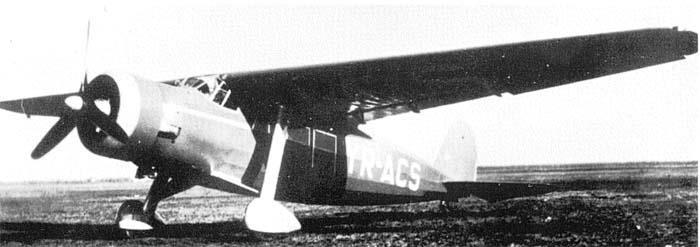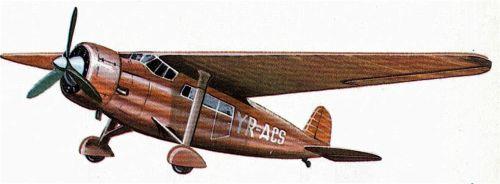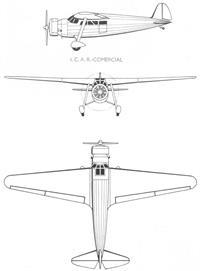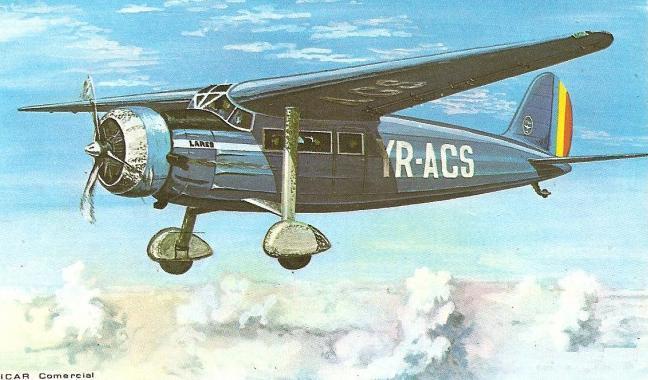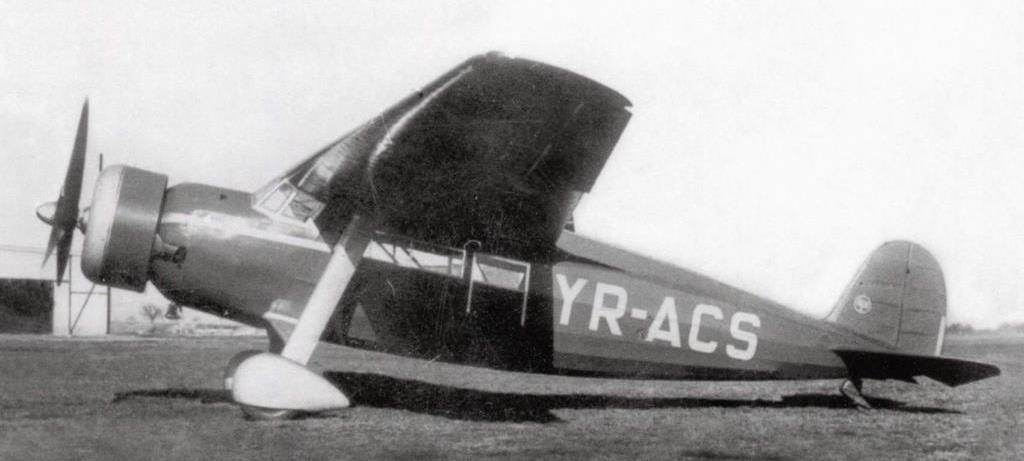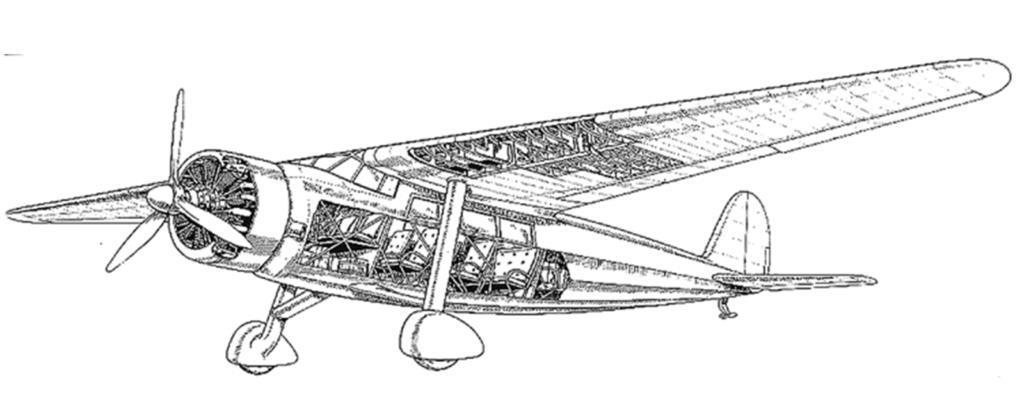In April 1933, Erhard Milch, previously head of Deutsche Luft Hansa was appointed Secretary of State for Air. Relations between him and Willy Messerschmitt had been bad ever since the cancellation and later re-ordering of the BFW M.20 by Luft Hansa, and the future of orders for BFW looked bleak. That summer, a visit was made to Romania where an order was placed by ICAR for the design of a small airliner, to be built by them in Romania. ICAR designated it the ICAR 36; Messerschmitt, working at BFW referred to it as the M 36.
The ICAR 36 was a high-wing cantilever monoplane of mixed construction, with a closed cockpit, single engine, and fixed landing gear. It had a welded steel tube fuselage, covered with plywood, and tapered single-spar, plywood-covered wings. The crew of two sat in the cockpit, forward of the wing, which was equipped with a radio and could be fitted with twin controls. The cabin for six passengers, with wide rectangular windows and access doors at the rear, was aft and below the cockpit / wings. There were also two baggage compartments. The main undercarriage was spatted, with long faired vertical struts to the underside of the wing.
Power was provided by a 283 kW (380 hp) Armstrong Siddeley Serval radial engine rather than the Gnome-Rhone-built Bristol Jupiter of the same power originally proposed
One aircraft (YR-ACS) was built, later modified with a cabin for five passengers and two luggage compartments. Initially intended to be powered by a licence-built 340 kW (450 hp) Gnome & Rhône 7K radial engine, the aircraft was eventually fitted with a 280 kW (380 hp) Armstrong Siddeley Serval I ten-cylinder radial engine in a NACA cowling.,which was, in turn, replaced with a 220 kW (300 hp) Lorraine 7M Mizar 47, driving a three-bladed propeller. The fixed landing gear was supported by long faired vertical struts to the wings, with teardrop spats over the mainwheels and a tailwheel at the end of the fuselage.
| Type |
2 + 6 airliner |
| Engine |
1 × Armstrong Siddeley Serval ten cylinder, double row radial, 380 hp |
| Dimensions |
Length 9.82 m, height 3,50 m, span 15,40 m, wing area 30,5 m2 |
| Weights |
Empty weight 1,350 kg, flying weight 2250 kg
|
| Performance |
Max. speed: 240 km/h, cruising speed 215 km/h, stall speed 89 km/h, range: 700 km , service ceiling 4500 m |
| Type |
Werk.Nr |
Registration |
History |
|
|
YR-ACS |
From 1935, it operated with the Romanian airline LARES on several internal routes including the Bucharest to Cernauti run. |
